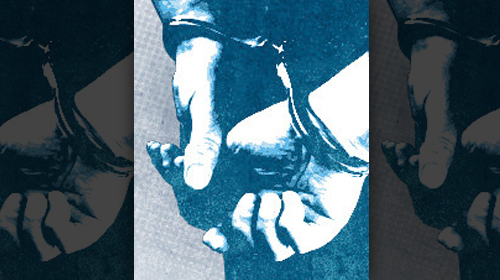
This is a good week in Illinois.
Yesterday, Gov. Pat Quinn announced that he would close the “supermax” facility at Tamms Correctional Facility, where prisoners are held in long-term solitary confinement. As I’ve written before, closing the facility provides the State of Illinois with a unique opportunity to save money and make an important public policy change that promotes human rights and public safety – reducing the use of solitary confinement. The ACLU called for the closure of Tamms at a hearing in April.
Opened in 1995, the correctional facility at Tamms has been enormously expensive to Illinois taxpayers. The best estimate is that it costs three times more to house a prisoner in Tamms than the state’s average per-prisoner cost. So, it is easy to see why the governor targeted this facility for closure – it will save the State tens of millions of dollars each year.
Part of the reason that the facility was so expensive was the nature of incarceration at Tamms. The supermax structure was constructed to hold prisoners in solitary confinement, without contact with others for extended periods of time. Solitary confinement became a norm at Tamms, resulting in more than 50 prisoners being held in continuous solitary confinement for more than 10 years. Yes, a full decade in solitary confinement.
Evidence suggests that the use of long-term solitary confinement of the type used at Tamms profoundly and irreparably damages the prisoners exposed to such harsh treatment. Speaking specifically about Tamms, a federal judge in 2010 wrote that “Tamms imposes drastic limitations on human contact, so much so as to inflict lasting psychological and emotional harm on inmates confined for long periods.”
Over many years, courts have recognized this damaging psychological effect and the extreme suffering caused by long-term solitary confinement. Indeed, the federal courts have repeatedly held that placing the severely mentally ill in such conditions is cruel and unusual punishment under the Eighth Amendment to the Constitution. Because of the grave harms inflicted on human beings by solitary confinement, the U.N. Special Rapporteur on Torture called for a global ban on this brutal form of punishment, such as the confinement practiced at supermax prisons like Tamms, except in very exceptional circumstances, as a last resort, and even then for as short a time as possible.
In response to the announcement by Gov. Quinn, some have (predictably) raised concerns, suggesting that Illinois residents might not be safe when the facility is closed. No evidence is offered for this suggestion, only dark inferences of some pending threat. There is a reason that these voices offer no evidence: it does not exist. Indeed, there is evidence from other states across the nation that prisoners who are held in solitary confinement actually have a higher rate of recidivism than those held in the general population. In other words, Tamms – like other supermax facilities – simply has not added to our public safety.
Closing Tamms offers the State of Illinois a unique opportunity to re-examine the Department of Corrections’ use of solitary confinement in all of its facilities. Recent years have seen such evaluations in other states, with a reduction in the use of solitary confinement in states like Mississippi, Maine and Colorado. These states have seen no increase in crime and they have enjoyed considerable cost savings. Illinois can follow this path.
We should not let voices of alarm about public safety deter state officials from looking at the use of solitary confinement as part of that process. It turns out that we can save money by implementing good, humane policies.
Learn more about solitary confinement: Sign up for breaking news alerts, follow us on Twitter, and like us on Facebook.


